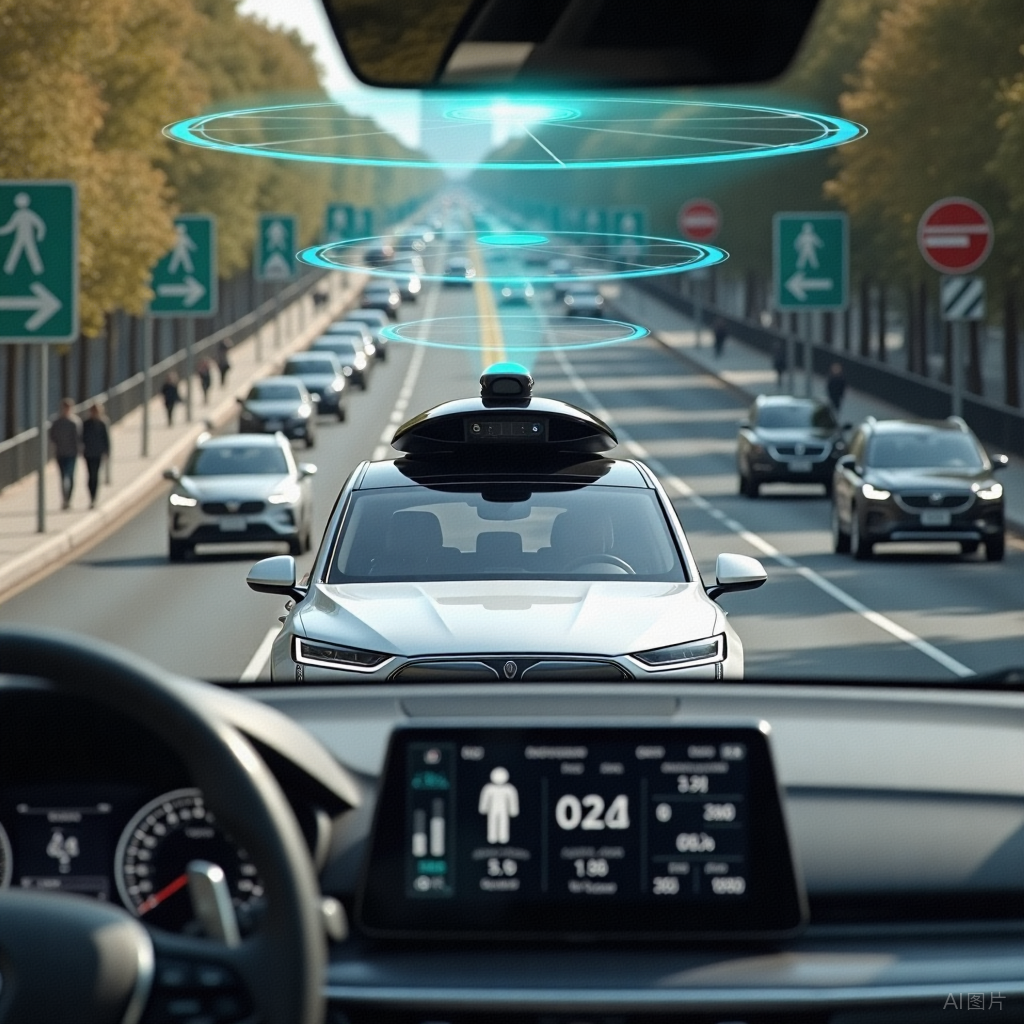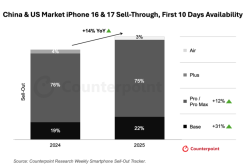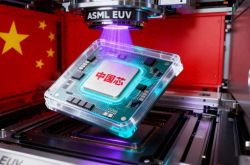NPC and CPPCC Sessions Highlight Driverless Vehicles: Are You Ready for the 2025 'AI Revolution' on Wheels?
![]() 03/07 2025
03/07 2025
![]() 613
613
Introduction
Driverless vehicles have once again captured the spotlight during this year's National People's Congress (NPC) and Chinese People's Political Consultative Conference (CPPCC) sessions!
Prominent delegates and committee members, including Lei Jun and He Xiaopeng, have put forth proposals aimed at accelerating the development of driverless technology in China.
Why is driverless technology generating such widespread interest?
Let's delve into this topic with Driverless Vehicles on the Way (public account: Driverless Vehicles on the Way)!
(For further reading, please click:
"NPC and CPPCC Sessions 2025: Calls for Accelerated Legislation and Large-Scale Application of Autonomous Driving by Delegates Including Lei Jun, Wu Renbiao, Jiang Haoran, and Zhou Guangquan")

I. The Dawn of Driverless Vehicles: The 2025 Wave
Driverless vehicles have once again emerged as a focal point during this year's NPC and CPPCC sessions.
Tech luminaries like Lei Jun have advocated for initiatives to propel the advancement of driverless technology, and policymakers have sent a clear signal—the government work report explicitly underscores the necessity to vigorously develop new-generation intelligent terminals, encompassing intelligent and connected new energy vehicles, AI smartphones and computers, and intelligent robots.
Why is driverless technology generating such fervent interest?
The answer lies in the explosive growth of AI technology.
Following the software revolution ignited by DeepSeek, the next frontier for AI implementation is most likely to manifest in intelligent robots and driverless vehicles.
However, embodied intelligence is still in its nascent research and development phase, with large-scale commercialization still on the horizon.
Conversely, driverless vehicles are poised on the brink of widespread commercialization.
In 2025, the wave of driverless vehicles has officially arrived.
II. The Trillion-Dollar Race: The Sino-American 'War on Wheels'
Driverless vehicles transcend mere technological boundaries; they represent a trillion-dollar super competition.
A report published by ARK Invest predicts that by 2030, the market size for driverless vehicles will skyrocket to $10 trillion, with over 50 million driverless vehicles expected worldwide. The cost per mile for scaled autonomous taxis is projected to plummet from $1.10 to $0.25, heralding a revolution in the logistics and transportation industries.
Amidst this colossal market, competition between Chinese and American tech giants has intensified.
Tesla: Elon Musk continues to enhance FSD (Full Self-Driving) capabilities through software updates and hardware upgrades, aiming to roll out its full self-driving features globally. In June this year, Tesla will launch its driverless taxi service, Cybercab, in Austin, surpassing expectations in terms of deployment speed.
Waymo: Owned by Google, Waymo is experiencing rapid growth in the US market and has become a sought-after investment in Silicon Valley. Waymo has introduced driverless taxi services in cities such as San Francisco and Los Angeles and plans to expand into Austin and Atlanta by 2025.
Chinese tech companies are not to be outdone.
Luobo Kuaipao, a pioneer in Chinese driverless technology, not only invests consistently in technology but also offers driverless services across multiple cities.
WeRide and Pony.ai have listed on the US stock market, with their driverless vehicles operating not only in various parts of China but also gradually being introduced worldwide.
China's edge lies in its colossal market and comprehensive industrial chain—from power batteries to LiDAR, automotive-grade chips, and large models for driverless vehicles, China boasts a local supply chain that spans the entire upstream and downstream spectrum.
III. Policy Dividends: The 'Accelerator' and 'Brake' for Driverless Vehicles
Despite relatively mature technology, the deployment speed of driverless vehicles heavily relies on policy support.
United States: In August 2023, San Francisco approved all-day, all-area commercial operation of driverless taxis, setting a global precedent. Waymo and Tesla are also accelerating their footprints in multiple cities.
China: Although policy incentives have been introduced earlier, the pace of deployment has been relatively cautious. Currently, cities like Beijing, Shanghai, and Guangzhou are only conducting limited pilot projects in specified areas and timeframes.

This caution is justified. The rollout of driverless vehicles implicates public safety and adjustments to the employment structure, necessitating policymakers to strike a balance between technological innovation and social stability.
IV. The 'Ripple Effect' of Driverless Vehicles: New Jobs and Reshaped Employment Structure
The proliferation of driverless vehicles will inevitably lead to the disappearance of certain jobs, such as professional drivers.
However, history teaches us that technological progress never simply 'eliminates' jobs; it creates new opportunities.
The 'Red Flag Act' of the 19th century: Coachmen vehemently opposed the introduction of cars, fearing unemployment. Nonetheless, the automotive industry's evolution eventually spawned millions of new jobs.
Electric Light Revolution: Lamp lighters protested the widespread adoption of electric lights, yet instead of terminating human labor, electric lights spurred the emergence of new professions like grid maintenance workers and electrical engineers.
Driverless vehicles follow a similar trajectory.
With the widespread adoption of technology, new professions such as cloud dispatchers, vehicle-road collaboration engineers, and driverless vehicle trainers are burgeoning.
Among the 19 new professions recently announced by the Ministry of Human Resources and Social Security are intelligent and connected vehicle testers and intelligent manufacturing system operation and maintenance personnel, all intimately tied to driverless vehicles.
V. Future Outlook: The 'Smart City' Vision for Driverless Vehicles
The ultimate aspiration of driverless vehicles transcends mere autonomous driving; it envisions intelligent solutions for smart city construction.
In the future, urban traffic management, logistics and distribution, and public services will become more efficient and convenient thanks to driverless vehicles.
Traffic Management: Driverless vehicles can significantly mitigate traffic congestion and reduce accident rates through real-time data analysis and route optimization.
Logistics and Distribution: Driverless trucks and delivery vehicles will revolutionize the logistics industry, lowering transportation costs and enhancing efficiency.
Public Services: Driverless buses and taxis will provide more convenient transportation services to citizens.
In conclusion, Driverless Vehicles on the Way (public account: Driverless Vehicles on the Way) believes that the wave of driverless vehicles is unstoppable. In 2025, this 'AI revolution on wheels' will profoundly alter our way of life. For the general public, rather than fearing the impact of technology, it is more prudent to consider how to best adapt to this rapidly evolving world.
Dear readers! Are you ready for the future of driverless vehicles?








